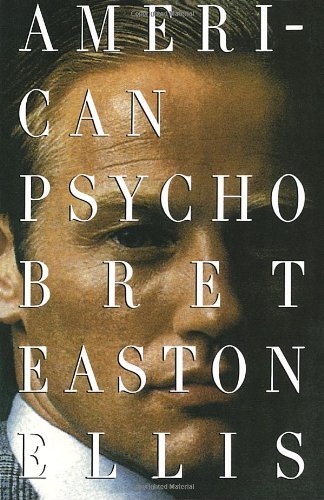Welcome to my review of American Psycho by Bret Easton Ellis. Buckle up, folks, because we’re diving into the twisted world of Patrick Bateman, where 1980s Wall Street greed meets horror and satire.
First off, if you’re squeamish, consider this your warning. The book’s graphic violence is intense. But beyond the gore, Ellis critiques consumerism and the quest for identity with sharp wit. Let’s see how it holds up!
In a nutshell
American Psycho by Bret Easton Ellis is a dark satirical novel set in the opulent and aggressive world of 1980s Wall Street. The book is a disturbing yet gripping piece of fiction that falls under the genres of psychological thriller and horror. It follows Patrick Bateman, a charming and successful investment banker with a sinister double life.
Themes in the book include consumerism, identity, and the moral decay of society. Bateman’s obsession with material wealth and personal appearance highlights the emptiness of consumer culture. This novel offers a scathing critique of the era’s greed and superficial values.
American Psycho is not for the faint-hearted. Its graphic content and brutal honesty serve to underline the book’s underlying messages. Read it to explore the dark corners of human nature and society, but be prepared for a wild ride.
Characterization of Patrick Bateman in American Psycho by Bret Easton Ellis
When you crack open American Psycho by Bret Easton Ellis, you’re introduced to Patrick Bateman, possibly the most disconcerting character you’ll ever meet. Imagine the perfect blend of charming and psychotic. That’s Bateman for you! He’s like the guy at every party who seems completely normal until he starts discussing his extensive knowledge of torture.
Bateman works on Wall Street and does everything you expect a successful Wall Street guy to do, like working out obsessively and eating at fancy restaurants. But his hobbies get a little… dark. This guy isn’t just obsessed with suits and business cards; he’s got a penchant for murder. Yeah, you read that right. He’s a master of blending in with society while hiding his truly sinister side. It’s like he’s living a double life. One minute, he’s discussing the latest album by Whitney Houston; the next, he’s planning his next gruesome deed.
Ellis does a great job of making you flip-flop between feeling a bit sorry for Bateman and wanting to run far, far away from his psychotic tendencies. You catch glimpses of his vulnerable side, but let’s be real, he’s mostly just terrifying. The character is written so vividly that you can almost hear his chilling monologues, making you question humanity’s dark side. It’s a wild ride, filled with tension and psychological twists.
Next up, let’s chat about how Ellis paints a vivid picture of 1980s Wall Street. Ready for a trip back in time with a side of greed?
Depiction of 1980s Wall Street in ‘American Psycho’ by Bret Easton Ellis
Oh boy, if you thought the 1980s were all about big hair and neon fanny packs, ‘American Psycho’ by Bret Easton Ellis will make you think again! This book’s look at Wall Street is like putting the financial hub under a microscope – and it ain’t pretty. Patrick Bateman, our very own Gordon Gekko on steroids, navigates this world where greed definitely isn’t good; it’s insane. Ellis shows us a playground for the rich, fueled by money, power, and outrageous parties.
One of the first things you’ll notice is how Ellis captures the excess. Everyone’s obsessed with the latest fashion, the fanciest restaurants, and, of course, their status. The characters spend more time comparing business cards than actually working. It’s so over-the-top that you sometimes wonder if you’re reading a satire or a horror novel. (Spoiler: it’s a bit of both!)
Then, there’s the cutthroat competition. Bateman and his colleagues are all trying to one-up each other, and it’s more deadly than a game of Monopoly with my family. The book paints Wall Street as a place where humanity takes a backseat to profits. It’s not just about making money; it’s about crushing everyone in your way.
Ellis’s depiction of this time and place feels exaggerated yet eerily real. It’s like looking at a funhouse mirror that reveals the ugliest truths behind the sleek, polished façade.
Next up, let’s get into the juicy themes of consumerism and identity that make this book a true head-scratcher.
Themes of Consumerism and Identity in ‘American Psycho’ by Bret Easton Ellis
‘American Psycho’ by Bret Easton Ellis is a dive into the dark, twisted mind of Patrick Bateman. However, beyond the bloody violence and gore (which we will get to later), the book is a sharp critique of 1980s consumer culture and the quest for identity.
Patrick Bateman is obsessed with brands, designer clothes, and the latest gadgets. The novel is filled with long, detailed descriptions of his possessions, from his high-end stereo equipment to his skincare routine. It’s as if Patrick believes his worth is tied to these material goods.
But Ellis doesn’t stop there. He uses Bateman’s character to show how this materialism is hollow. Despite having everything money can buy, Patrick is deeply unhappy and disconnected. He struggles to find meaning in his life, which leads to his violent outbursts. This theme is particularly poignant for anyone who has ever felt the pressure to keep up with the Joneses.
Identity is another big theme in the book. Patrick constantly worries about how others perceive him. He envies his colleagues’ business cards, he frets over his appearance, and he even pretends to be other people. In the end, he is just as much a product as the items he covets.
Ellis’s ‘American Psycho’ forces readers to question whether our identity should be tied to what we own or if there’s something deeper that makes us who we are.
Stay tuned because next, we’ll tackle the book’s shocking portrayal of violence and graphic content. It’s going to get bloody!
Violence and Graphic Content in ‘American Psycho’
‘American Psycho’ by Bret Easton Ellis is famous, or maybe infamous, for its graphic content and violence. The book doesn’t just use violence as a plot device; it dives headfirst into it, splashing gore and shock value all over the pages like it’s painting a modern art piece. The main character, Patrick Bateman, isn’t your run-of-the-mill Wall Street guy. He’s a well-dressed nightmare with a fondness for classical music…and gruesome murder.
I remember reading this book late at night and thinking, “Who needs sleep, anyway?” Some scenes are so vivid, you practically feel the splatter. If you have a weak stomach or think puppies and rainbows are the pinnacle of art, this book might not be for you. Ellis spares no detail; every violent act is described in a way that’s so real, it makes you cringe.
On the one hand, this brutal honesty serves a purpose. It shows the dark side of consumer culture and the emptiness of the high-flying lifestyle that Bateman lives. On the other hand, some might argue it goes too far, crossing the line from art to something more akin to a horror show. You’ll find yourself questioning if all this gore is necessary or just shock for shock’s sake.
So, would I recommend ‘American Psycho’? If you have a strong constitution and are a fan of psychological thrillers, go for it. It’s intense, memorable, and thought-provoking. But if you’re squeamish, you might want to sit this one out and stick to something a bit lighter.
Conclusion
And that, dear reader, concludes our wild ride through ‘American Psycho’ by Bret Easton Ellis. This book is a dark, twisted satire that peels back the layers of 1980s Wall Street, shows us the ugly side of consumerism, and explores the depths of identity. Patrick Bateman is a character you won’t soon forget—whether you want to or not. If you have the stomach for graphic content and want a gripping story that makes you think, this one’s for you. But be warned: it’s not for the faint of heart. Pick it up if you’re brave enough!


